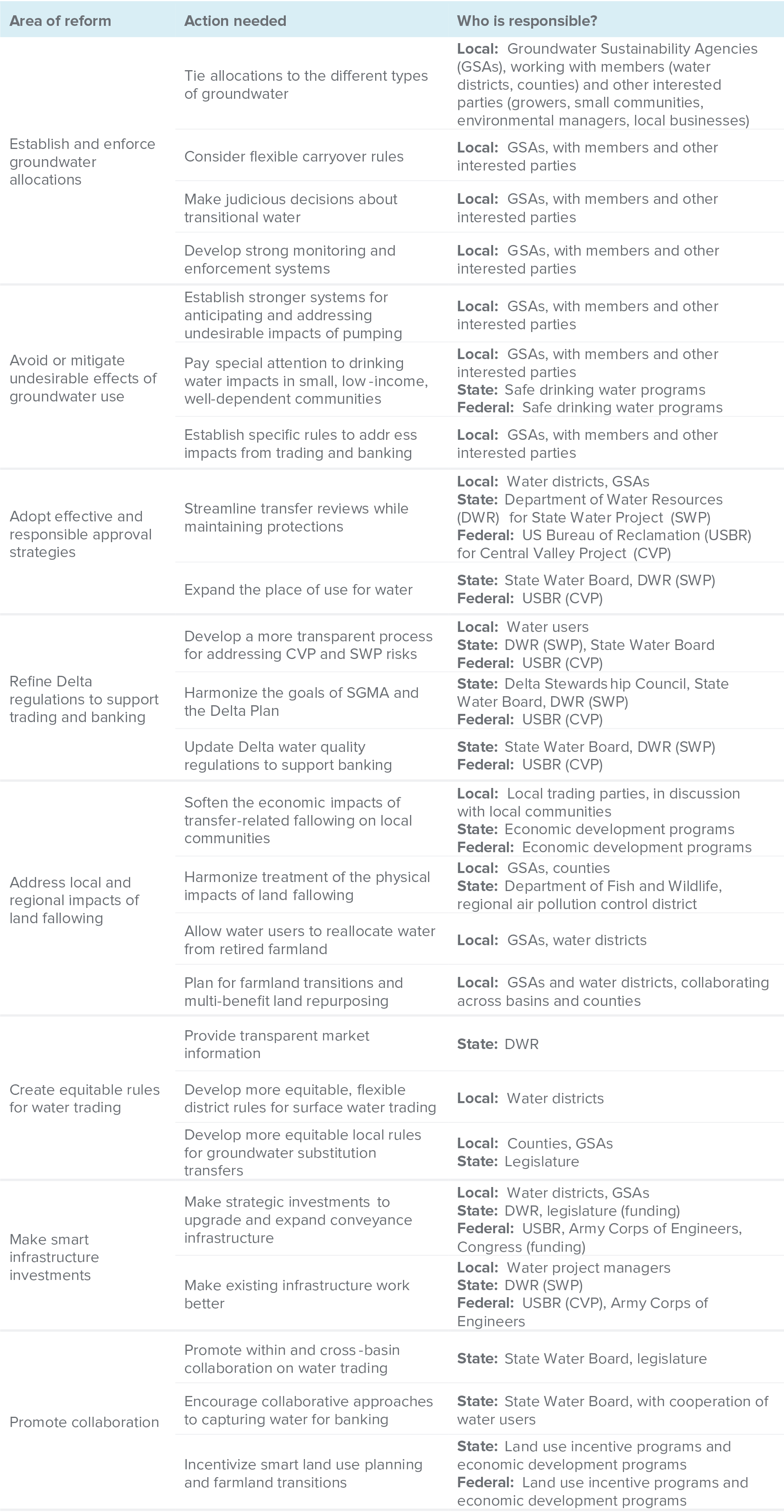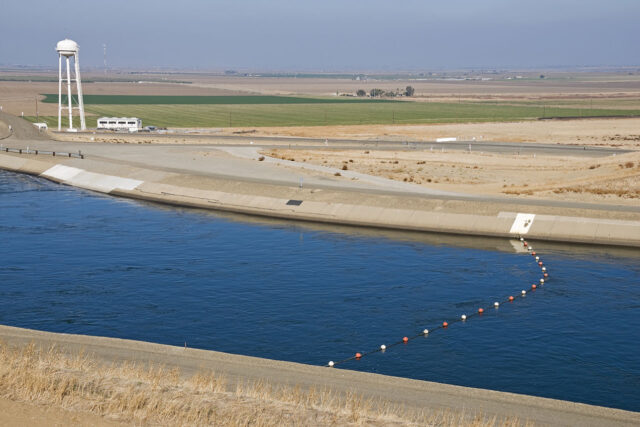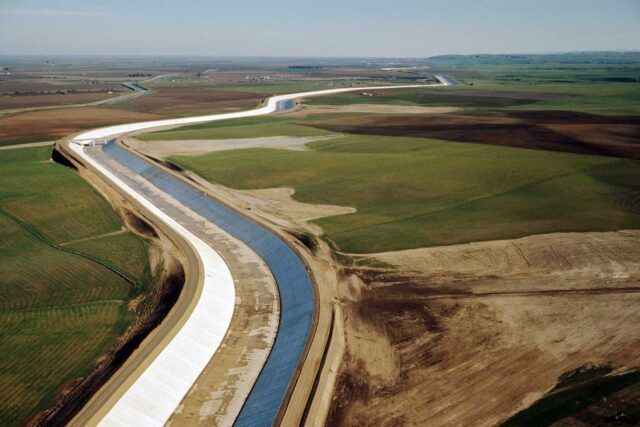Highlights
- The Sustainable Groundwater Management Act (SGMA) requires local water users to bring their groundwater basins into balance by the 2040s.
- Water markets could play a key role in helping communities adapt to SGMA and stave off the worst effects of reduced groundwater pumping.
- Good design is key to creating effective and responsible water markets that support low-cost trading and banking while protecting third parties from harm.
- Water markets are currently hampered by a range of stumbling blocks, but thoughtful, concerted action can address these challenges and help the state build resilience.
Many of California’s groundwater basins are severely overdrafted
Until recently, groundwater use in most of the state was largely unregulated. Many basins have experienced long-term overdraft—where pumping has regularly exceeded replenishment. This has resulted in a suite of undesirable impacts—including sinking lands, dry wells, degraded water quality, and harm to wetlands and streams.
The Sustainable Groundwater Management Act (SGMA) was enacted in 2014 to remedy this situation. It mandates that local water users bring their groundwater basins into long-term balance by the early 2040s, while addressing the undesirable results of pumping along the way.
SGMA will ultimately bring benefits, including building up groundwater reserves vital for managing droughts. But getting to sustainability will entail costs. In particular, groundwater use will need to decline in many overdrafted basins. This will mean taking some farmland out of production—which can have economic impacts on local and regional communities. Finding ways to manage the transition effectively will be key to success.
Carefully designed water markets could help bring groundwater into balance
Two related market-based tools may prove essential as Californians adapt to the new regime: water trading and water banking.
California has experience with water markets: since the early 1990s, parties have actively traded surface water across much of the state, and groundwater markets have sprung up in some adjudicated basins.
The state also has some of the most sophisticated groundwater banks—dedicated underground water storage—in the world. SGMA offers the possibility of expanding existing water markets and developing new ones to help meet the ambitious goal of bringing groundwater basins into balance.
Market-based approaches offer several advantages over more rigid approaches to managing scarcity, such as across-the-board groundwater cutbacks. Trading can:
- Incentivize water users who have rights to more ample supplies and lower-value uses to sell or lease water to those with more limited supplies and higher-value uses—in agriculture, cities and towns, or the environment.
- Lessen the costs of temporary shortages during droughts and support long-term shifts in water use patterns.
- Help society adapt to the hydrologic realities of both SGMA and the changing climate, which is bringing more volatile precipitation and hotter, more intense droughts.
- Facilitate groundwater banking—formal projects that store water underground on behalf of specific parties. This is an important risk management strategy that will likely prove key for both SGMA and climate adaptation.
How can we improve water markets in California?
A combination of aging infrastructure and complex, conflicting regulations is currently hampering the expansion of water banking and water trading. Multiple actors at the local, state, and federal levels can drive reforms to streamline these practices while protecting other parties from harm. (See the table below for a list of reforms and key actors.)
First, good market design is key. Effective and responsible markets include five essential features:
- clearly defined, secure property rights;
- reliable measurement, reporting, and verification;
- hydrologic connections among trading parties;
- transparent market information; and
- mechanisms for addressing impacts on third parties.
It’s also important to support low-cost trading and banking while protecting third parties from harm. Overpumping can impact both water supply and water quality and cause land subsidence. Surface water transfers and groundwater transfers and banking, if not well-regulated, can have the same impacts. Also, land fallowing can impact neighboring farmland, wildlife, and air quality. A well-designed market should craft mechanisms for addressing impacts where they are significant.
Currently, groundwater sustainability agencies and other actors face several hurdles that make it difficult to fully utilize water markets, including gaps in groundwater governance and infrastructure, and tensions in the approval process.
Swift action to establish and enforce groundwater allocations, avoid or mitigate undesirable effects of pumping, adopt effective and responsible approval strategies, and refine regulations will help the state bring its groundwater basins into balance and improve its resilience for years to come. Most of the recommended changes can be accomplished within existing agency authorities, without new legislation. But leadership—and a willingness to take risks and push boundaries—will be essential to success.
Priority reforms to support effective and responsible water markets

NOTE: Responsible parties are priority actors; others will likely be involved in this work as well.
Topics
Drought Floods Freshwater Ecosystems Paying for Water Safe Drinking Water San Joaquin Valley Water Supply Water, Land & Air




